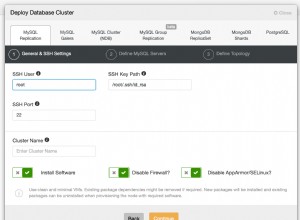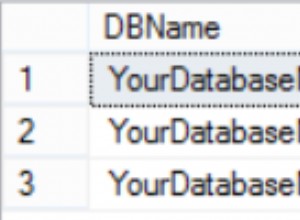esta é a melhor fonte:
http://www.sommarskog.se/arrays-in-sql.html
crie uma função de divisão e use-a como:
SELECT
*
FROM YourTable y
INNER JOIN dbo.splitFunction(@Parameter) s ON y.ID=s.Value
Eu prefiro a abordagem da tabela numérica
Para que este método funcione, você precisa fazer esta configuração de tabela de tempo:
SELECT TOP 10000 IDENTITY(int,1,1) AS Number
INTO Numbers
FROM sys.objects s1
CROSS JOIN sys.objects s2
ALTER TABLE Numbers ADD CONSTRAINT PK_Numbers PRIMARY KEY CLUSTERED (Number)
Depois que a tabela Numbers estiver configurada, crie esta função:
CREATE FUNCTION [dbo].[FN_ListToTable]
(
@SplitOn char(1) --REQUIRED, the character to split the @List string on
,@List varchar(8000)--REQUIRED, the list to split apart
)
RETURNS TABLE
AS
RETURN
(
----------------
--SINGLE QUERY-- --this will not return empty rows
----------------
SELECT
ListValue
FROM (SELECT
LTRIM(RTRIM(SUBSTRING(List2, number+1, CHARINDEX(@SplitOn, List2, number+1)-number - 1))) AS ListValue
FROM (
SELECT @SplitOn + @List + @SplitOn AS List2
) AS dt
INNER JOIN Numbers n ON n.Number < LEN(dt.List2)
WHERE SUBSTRING(List2, number, 1) = @SplitOn
) dt2
WHERE ListValue IS NOT NULL AND ListValue!=''
);
GO
Agora você pode facilmente dividir uma string CSV em uma tabela e juntá-la:
select * from dbo.FN_ListToTable(',','1,2,3,,,4,5,6777,,,')
SAÍDA:
ListValue
-----------------------
1
2
3
4
5
6777
(6 row(s) affected)
Você pode passar uma string CSV para um procedimento e processar apenas linhas para os IDs fornecidos:
SELECT
y.*
FROM YourTable y
INNER JOIN dbo.FN_ListToTable(',',@GivenCSV) s ON y.ID=s.ListValue




